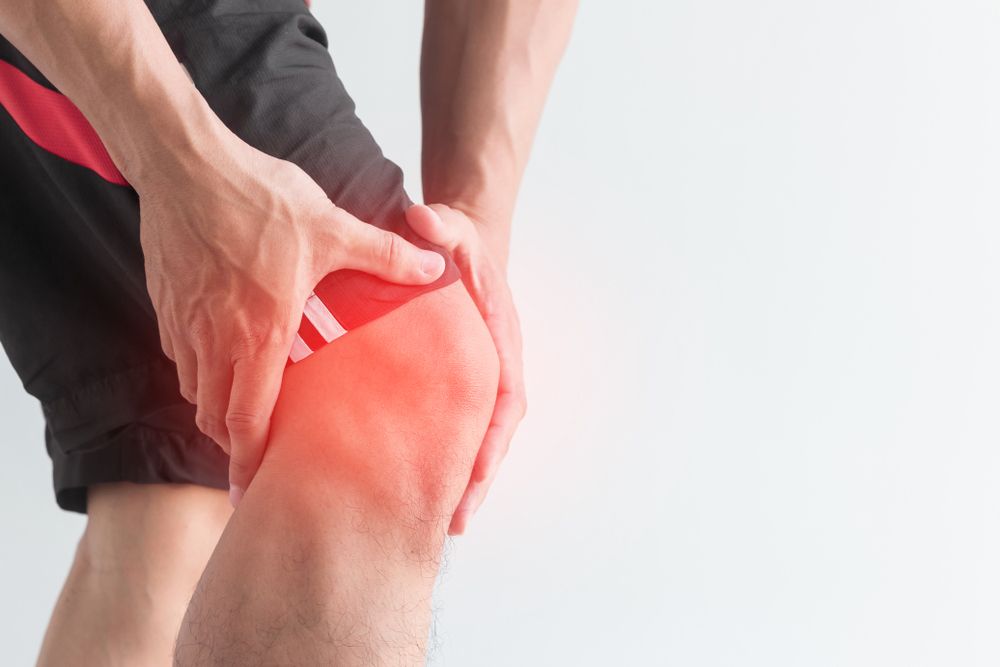[vc_row][vc_column][vc_column_text]Hamstring strains make up one of the most common sporting injuries, especially in sports that involve high levels of sprinting such as footy or soccer.
What is the hamstring?
The hamstrings are the collection of muscles that make up the back of your thigh. There are three muscles; biceps femoris, semimembranosus and semitendinosus, and collectively work to bend the knee, and control the knee into straightening.
What is a hamstring strain?
Like all muscle strains, a hamstring strain is essentially the small muscle fibres being damaged or ruptured. There are varying degrees of strains, depending on the level of damage.
Grade 1 :
Only a few fibres have been damaged, represented by mild pain and stiffness, usually the day following. Walking is generally normal and the knee can still be bent normally.
Grade 2 :
Approximately half of the fibres that make up that hamstring muscle have been torn. Pain is felt immediately and generally the area will show swelling. Often bending the knee and walking is painful.
Grade 3 :
Full rupture, or all fibres of the hamstring muscle have been torn. The area is often severely painful and swollen, often with bruising extending down the back of the thigh and into the calf. Walking is extremely difficult, and bending the knee is either very difficult or impossible due to the muscle not being able to complete its function.
When do hamstring injuries occur?
Hamstrings are lengthened (stretched) in positions where the knee is straight, especially if the hips are bent forwards at the same time (think touching your toes). Hamstrings are prone to injury in positions of extreme stretch, or when there is too much load especially while in a lengthened position. This translates into sports such as footy where the hamstring is on great length at the peak of the follow through from a kick.
Predisposing factors that increase the likelihood of hamstring strains include: previous hamstring injuries, strength imbalances, poor mobility through hips/knees, older age.
A large obstacle with hamstring injuries is they are very likely to re-occur if not rehabilitated properly. It is reported up to 48% of hamstring injuries can reoccur, which means more down time from enjoying sport.
What can be done and how do I prevent a hamstring Injury?
In the case of a hamstring injury, it is best to book and see your physio as quickly as possible. Pain and swelling management strategies can be implemented immediately to help minimise complications. Once settled, a gentle stretching and strengthening program is introduced to properly rehabilitate the hamstring muscle, ensuring the repair is as strong as possible, ready to return to your favourite sport. [/vc_column_text][/vc_column][/vc_row][vc_row][vc_column width=”1/2″][vc_single_image image=”4045″ img_size=”600×600″ label=””][/vc_column][vc_column width=”1/2″][vc_single_image image=”4049″ img_size=”600×600″ label=””][/vc_column][/vc_row][vc_row][vc_column][vc_column_text]Prevention is always the best option. If you are experiencing cramping, tightness or fatigue in your hamstrings throughout sport, this is a sign that they are not tolerating the load, and indicates risk of injury.
So if you have recently strained your hamstring and want to get back to sport asap, or what to help prevent hamstring injuries in the first place, feel free to come in and see one of our Physiotherapists here at Mundaring and Hills Physiotherapy. [/vc_column_text][/vc_column][/vc_row][vc_row full_width=”stretch_row” wrap_container=”yes” el_id=”our-team” el_class=”colored animate”][vc_column width=”1/3″][vc_single_image image=”3626″ img_size=”full” alignment=”center” el_class=”m-b-none” label=””][ultimate_spacer height=”40″ height_on_tabs=”30″ height_on_tabs_portrait=”20″ height_on_mob_landscape=”20″ height_on_mob=”20″][porto_buttons btn_title=”BOOK ONLINE NOW” btn_link=”url:https%3A%2F%2Fhealthengine.com.au%2Fphysiotherapist%2Fwa%2Fmundaring%2Fmundaring-and-hills-physiotherapy%2Fs62196||target:%20_blank|” btn_align=”porto-btn-center” btn_title_color=”#ffffff” btn_bg_color=”#77d1b9″ btn_hover=”porto-btn-fade-bg” el_class=”m-b-none”][/vc_column][vc_column width=”2/3″][ultimate_spacer height=”0″ height_on_mob_landscape=”15″ height_on_mob=”15″][porto_ultimate_heading main_heading=”Chandler Smith” alignment=”left”]Physiotherapist[/porto_ultimate_heading][vc_column_text]
Chandler graduated from Curtin University with a Bachelor of Science (Physiotherapy) and chose to dive straight into private practice as this is where his passion lies. Chandler has always been a competitive sportsman throughout his life, playing high-level tennis, soccer and hockey. He has been coaching tennis in the Perth Hills area for the past 10 years, as well as playing competitive tennis pennants leagues and tournaments. He believes in the importance of an active, balanced lifestyle and brings this approach to assisting individuals get back on track as quickly as possible.
Outside of work, Chandler enjoys driving all over the country, 4x4ing and camping at the best destinations on offer.
SPECIAL INTERESTS:
- Sporting injuries
- Knee pain
- Back pain
[/vc_column_text][/vc_column][/vc_row]

